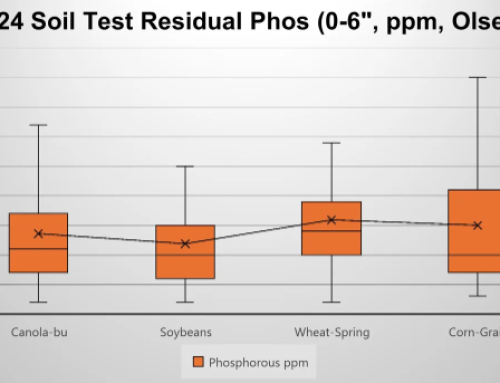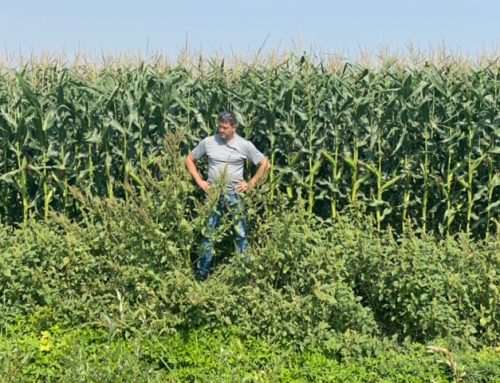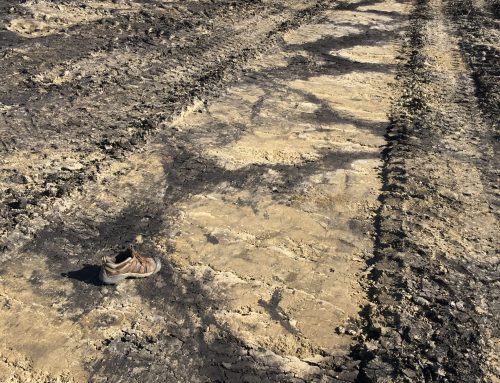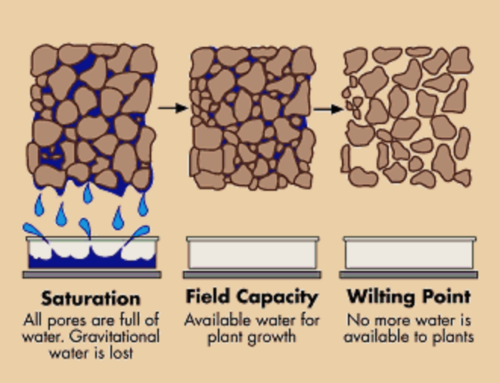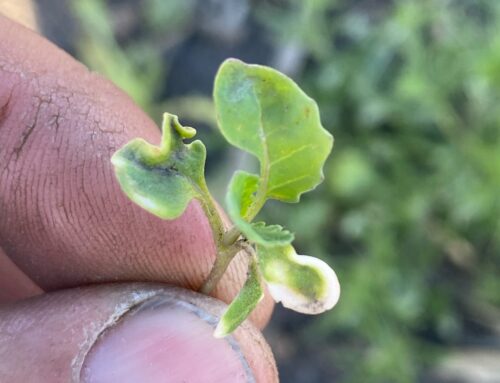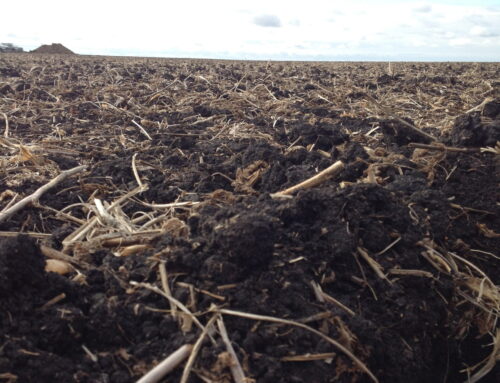ver study your yield maps and wonder why yields might increase or decrease with different operators or speeds? Or sometimes yield might change after supper when things start getting damp? Our first instinct is the combine must have been throwing more out the back, but it could also be that the mapping system wasn’t calibrated.
Our previous blog post Yield Mapping 101: Part 1 touched on the main components required for yield mapping. This post will discuss why it is important to calibrate your system. If someone is telling you not to worry about calibrating, they may be giving you bad advice. Not all calibration errors can be fixed post harvest. Lets dive into a couple scenarios and potential outcomes.
How do yield systems interpret data?
First off lets look at how a yield monitor records and interprets data. The monitor receives electrical signals from the yield sensor. The strength of that signal is referenced against a yield calibration curve to determine yield, which is then corrected for moisture and sometimes bulk density, to come up with a yield estimate. The estimate is then tagged with a location and time so it can be plotted on a map.
Combines will come with pre-set calibration curves for most crops that are relatively close. All systems allow for calibration so we can fine tune the accuracy. Threshing conditions will change from year to year, along with moisture and grain weight, so it is recommended that you calibrate every crop at least once a season.
Near-linear vs non-linear calibration curves
Most systems fall into 2 categories when it comes to calibration procedures depending on whether they use a near-linear or non-linear curve. Near-linear systems require a minimum of 1 calibration point and non-linear systems recommended at least 4 to 6 calibrations done at different grain flows. The reason you need to perform the calibrations at different grain flows it to teach the system how to properly interpret the range of signals received from the yield sensor. Grain flow will vary throughout the field depending on speed, harvesting conditions and grain yield. The more grain flow changes, the higher the chance for error. Going back to near-linear systems, although they say you only need 1 calibration, the fine print suggests you do a second calibration at low flow for increased accuracy.

It is important to calibrate at low flow in addition regular flows to increase accuracy. This example underestimates yields at low flow when poorly calibrated
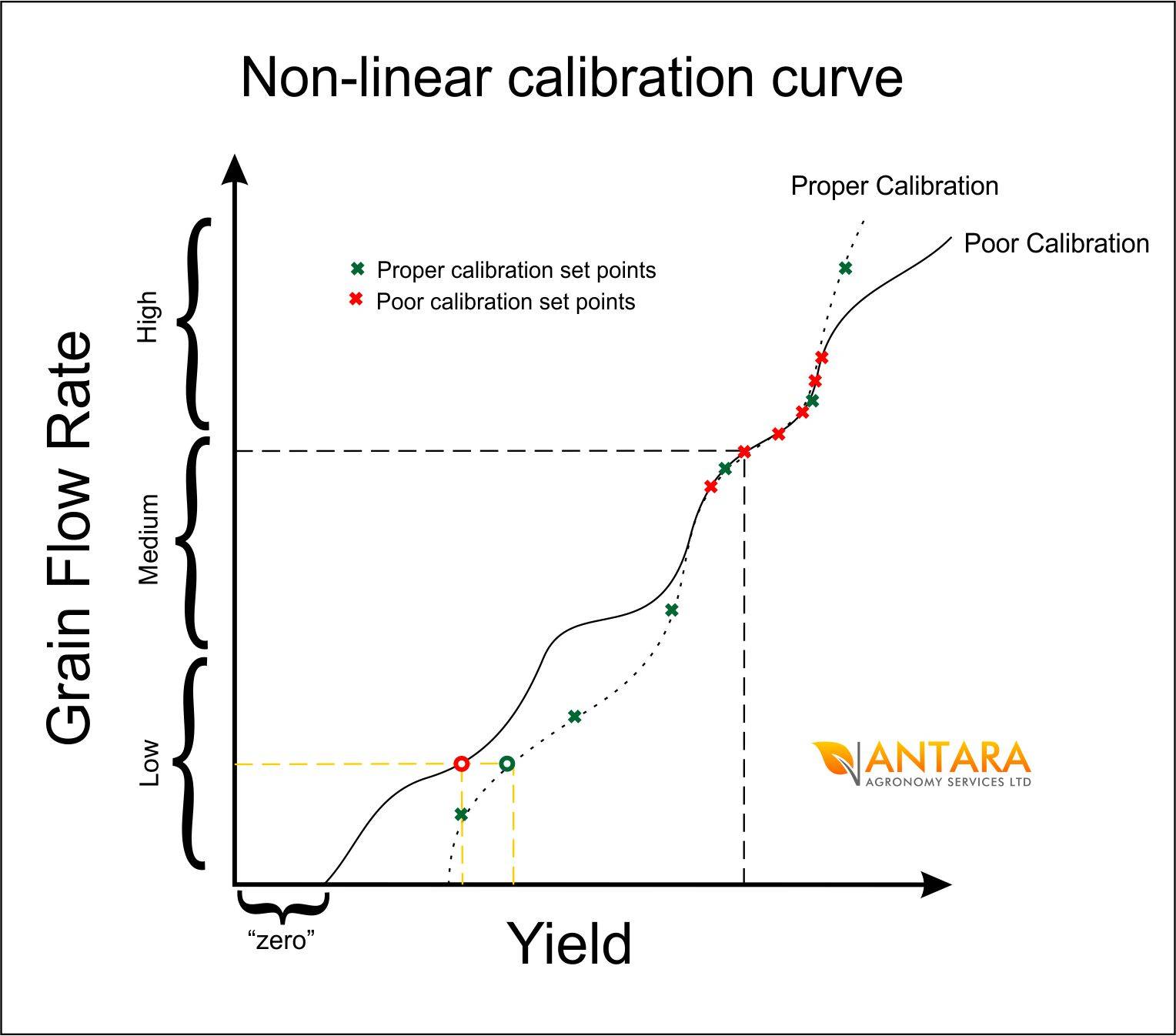
With a non-linear curve it is important to calibrated across different grain flows. If you calibrate 4-6 loads at the same grain flow you are only adjusting 1 part of the curve. A poor calibration can over or under estimate yields at different flows.
So when we talk about calibrating at different grain flows, it usually means calibrating at different speeds or swath widths. Most producers choose to change speeds so you might start with a calibration at 2mph and go up in 1/2 mile increments until you get to 4 or 5mph.
Now you can start to see why it is important to calibrate properly if you want to increase your accuracy. You can also see how different speeds can affect accuracy. Next time you see yields change with the operator or tough straw conditions, check your calibration.
Why you can’t always fix the maps after harvest
If someone tells you they can turn bad data into good data after harvest you are likely getting bad advice. Many software packages allow us to clean up yield data, but with limited capabilities. Yes we can remove bad points, highs and lows. etc. And yes we can also “adjust” yields to reflect field averages. Unfortunately, all we can really do is adjust the whole map by the same factor up or down. You cannot really adjust flow readings independently, i.e. only adjust low flow yields.
What happens when we have multiple combines?
Multiple combines also add a significant degree of difficulty. Sure we can adjust the yields after harvest so they match the field average. The problem still exists with poor calibrations whether it’s 1, 3 or 4 combines.
The bigger problem is when combines harvest separate blocks within a field. Say each combine harvests 40 ac. We can adjust yields so they reflect field averages, but not every 40 ac block is the same. If one block includes problem areas such as salinity or drainage issues, it should not yield the same as another block with better soils….
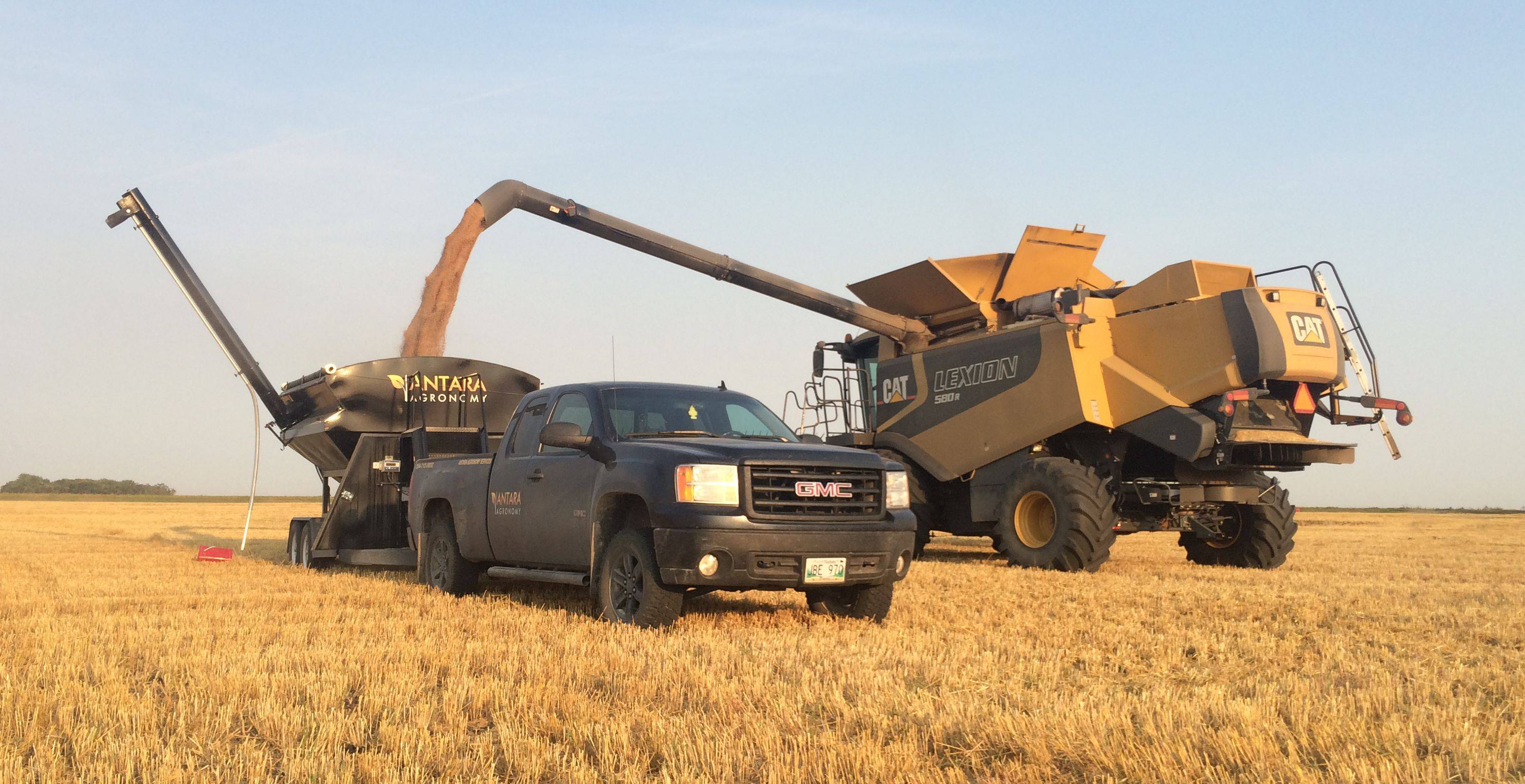
If you want good quality data that you can base sound decisions on, you will need to take the time to calibrate properly. Accurate data is necessary if you want you use your yield maps to evaluate any on-farm trials or variable rate programs. Antara Agronomy is well equipped to help you calibrate your systems properly, including your grain carts. We are equipped with a weigh wagon and ready to serve the Red River Valley of Manitoba and surrounding areas. Call today and book your calibration!
In part 3 of our Yield Mapping 101 series, we will look at how yield mapping can facilitate on-farm trials, how we can use it to evaluate our current management practices and variable rate application.

